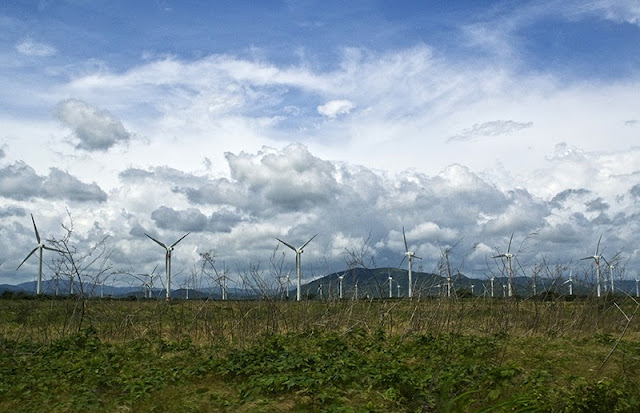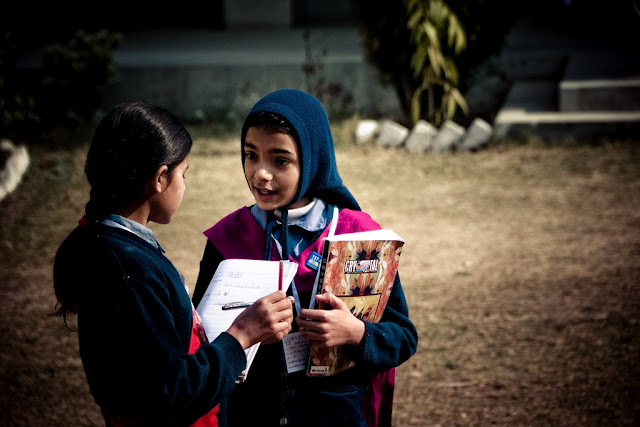-
U.S.-Mexico Cooperation on Renewable Energy: Building a Green Agenda
›Could joint green-energy development help improve relations between the United States and Mexico? Speakers at this spring’s launch of “Environment, Development and Growth: U.S.-Mexico Cooperation in Renewable Energies,” a report released by the Woodrow Wilson Center’s Mexico Institute, agreed that cooperating on renewable energy is a positive step. However, the panelists asserted that cooperation could be maximized by better harnessing Mexico’s renewable resources and by leveraging the economic complementarities that exist among the border states.
Mexico’s Green Energy Potential
Mexico has large untapped areas of geothermal, wind, and solar potential, according to Duncan Wood, author of the Wilson Center report and chair of the Department of International Relations at the Instituto Tecnologico Autonomo de Mexico (ITAM). Already, the country is the world’s third-largest producer of geothermal energy, and has large geothermal deposits in Baja California near major U.S. markets, such as San Diego and Los Angeles.
Mexico also offers great promise in wind power, with an estimated potential output of 1,800 to 2,400 megawatts for Baja California and 5,000 megawatts for southern Oaxaca state. Though Oaxaca is far from the U.S. border, it will soon be able to export electricity to U.S. markets, once Mexico’s mainland electrical grid is connected to the United States.
Wood also pointed out that Mexico is rich in solar energy, which could be marketed to the United States—particularly from the Baja California peninsula, which is the only part of the Mexican grid currently connected the United States. In biomass, he added, little investment has been made so far.
Opening New Avenues for Collaboration
With Mexico’s oil fields experiencing long-term and, in some cases, precipitous declines, the country is plotting a “future as a green nation,” shifting its policy focus toward alternative energy development, said Wood. In addition, Mexico’s renewable sector does have not the blanket prohibitions on private ventures that exist in the hydrocarbons sector, and regulatory adjustments over the past few administrations have enabled a more robust private stake in electricity generation and transmission.
A U.S.-Mexico taskforce on renewables was recently formed—an announcement timed to coincide with President Felipe Calderon’s April 2010 state visit to Washington—and there has been high-level engagement on the issue by both administrations. Collaboration between Mexico and U.S. government agencies through the Mexico Renewable Energy Program has enabled richer development of Mexico’s renewable resources while promoting the electrification and economic development of parts of rural Mexico. Joe Dukert, an independent energy analyst affiliated with the Center for Strategic & International Studies, pointed out that U.S.-Mexico collaboration on renewables is a little-acknowledged area of bilateral cooperation, and stressed the economic complementarities that exist between the two countries on the issue. He noted, for example, that Mexico was well-positioned to furnish power to help California meet its Renewables Portfolio Standard (RPS) by 2020.
Joe Dukert, an independent energy analyst affiliated with the Center for Strategic & International Studies, pointed out that U.S.-Mexico collaboration on renewables is a little-acknowledged area of bilateral cooperation, and stressed the economic complementarities that exist between the two countries on the issue. He noted, for example, that Mexico was well-positioned to furnish power to help California meet its Renewables Portfolio Standard (RPS) by 2020.
“Mexico can help them reach these [renewable energy] targets,” Dukert said. Yet at the same time, he said that Mexico needs to do more to enhance its profile as a renewable-energy supplier, and specifically suggested that energy attaches be assigned to the embassy and consulates.
Johanna Mendelson Forman, a senior associate with the Americas Program at the Center for Strategic & International Studies, emphasized the linkages connecting climate change, energy, and economic development. Forman warned that Mexico’s inadequate energy stocks are a problem for the United States, adding that “energy poverty is a real issue in Mexico.” Energy development and climate change—which are perceived as less polemical than other issues—are good entry points for a broader U.S.-Mexico dialogue, she remarked.
Robert Donnelly is a program associate with the Mexico Institute at the Woodrow Wilson Center.
Photo Credit: “Wind Mill Farm (Mexico),” courtesy of flickr user Cedric’s pics. Speaker photos by David Hawxhurst/Wilson Center. -
‘Interview:’ Educate Girls, Boys, To Meet the Population Challenge, Say Pakistan’s Leading Demographers
›June 25, 2010 // By Russell SticklorPakistan is at a major demographic crossroads. With a youth-heavy population of some 180 million and an annual population growth rate around 2 percent, the country’s population is projected to swell to roughly 335 million by mid-century. Such explosive growth raises major questions about Pakistan’s future, from looming food and water scarcity, to yawning inequalities in the nation’s educational and economic systems. Some warn that these problems threaten to drive a new generation of disaffected Pakistani youth toward political and religious radicalization.
Recently, I asked a number of leading Pakistani demographers visiting the Wilson Center how their country could best achieve more sustainable population growth rates and effectively harness the economic potential of Pakistani youth.
Educate Girls
Zeba Sathar, Pakistan country director for the Population Council in Islamabad, told me empowering girls through education represents one of the most important means of reducing the total fertility rate, which currently stands at four. “When children are educated—particularly when girls are educated—they take care of their fertility and their family size themselves,” Sathar said.
Yet securing educational opportunity for Pakistani girls has often been an uphill battle, largely due to entrenched social norms. Yasmeen Sabeeh Qazi, Karachi-based senior country adviser for the David and Lucile Packard Foundation’s Population Program in Pakistan, pointed out that a traditional preference for male children in Pakistani society has meant girls do not often receive the same level of family resources as males. This phenomenon has historically fed gender inequality, she said.
“Since boys are preferred, girls are not given the same kind of attention and nutrition, especially in the poorer and less-educated families,” Qazi told me. “But as the education level goes up, you see that this divide starts narrowing.” For Qazi, one of the keys to heightening educational access for girls is to increase both the quantity and quality of schools in rural districts, where two-thirds of Pakistanis live.
Decentralize Family Planning Services
Others I spoke with emphasized improving access to reproductive health and family planning services in rural and urban areas. The federal government’s relatively recent move to delegate operational authority for family planning services to the provincial or district level has encouraged many, such as Dr. Tufail Muhammad with the Pakistan Pediatric Association’s Child Rights & Abuse Committee in Peshawar.
Muhammad said the ongoing decentralization—which he described as “a major paradigm shift”—is meant to increase ownership of population planning policies at the local level, and therefore lead to more effective implementation because “the responsibility will be directly with the provincial government.” Once capacity is established at the local level to design and implement those policies, Muhammad added, “supervisors, administrators, and policymakers will be very close to [family planning] services.”
Manage the “Youth Bulge”
Yet despite the fact that both the public and private sectors are taking steps to address Pakistan’s growth issues, the population crunch will intensify before it potentially eases. Even assuming that greater educational opportunity for girls and increased local control over family planning services help drop Pakistan’s total fertility rate, the sheer size of the current youth bulge—two-thirds of the country’s population is under age 30—means population issues will inform every aspect of Pakistani society for decades to come.
In discussing the current state of Pakistan’s education system, some speakers also asserted that the influence of madrassas, or religious schools, over the student-aged population has often been overstated. Shahid Javed Burki, Pakistan’s former finance member and recent senior scholar at the Wilson Center, said during the panel discussion that inaccurate enrollment estimates created “the impression that the system is now dominated” by those institutions. He noted that more recent figures place madrassa enrollment at just five percent of the total student population.
With a majority of Pakistani students enrolled in regular public schools, he insisted that “public policy in Pakistan has to focus on public education” in order to prevent those students from slipping through the cracks. The problem, he added, was that “the education that they are receiving is pretty bad. It really does not prepare them to be active participants in the workforce and contribute to the economic development of the country.”
Still, most of the experts sounded optimistic about Pakistan’s potential to mitigate some of the adverse effects associated with the near-doubling of the country’s population during the next 40 years. By starting to more openly address an issue that the government and the powerful Pakistani media have long preferred to ignore, they seemed to agree the country is taking a big step in dealing head-on with its looming demographic challenges.
“I don’t look at the Pakistani population as a burden, but rather as an asset,” remarked Burki. “But it has to be managed.”
Photo Credit: “School Girls Talk in Islamabad,” courtesy of flickr user Documentally. -
Interview With Wilson Center Scholar Jill Shankleman: Could Transparency Initiatives Mitigate the Resource Curse in Afghanistan?
›June 25, 2010 // By Schuyler Null
In the wake of The New York Times article detailing a potential mineral bonanza in Afghanistan, Senators Ben Cardin and Dick Lugar earlier this week published an op-ed in support of a bill that would create “an international standard for transparency in law” by requiring oil, gas, and mining industries to report amounts paid for drilling/mining rights in their SEC filings. A similar program, albeit a voluntary one, already exists – the Extractive Industries Transparency Initiative (EITI). The senators, however, raised questions about the ability of EITI to ensure transparency and accountability of payments for future mining rights to Afghanistan’s government. Joining EITI was a “good first step,” they say, “but too many countries and companies remain outside this system.”
-
Backdraft: The Conflict Potential of Climate Mitigation and Adaptation
›The European Union’s biofuel goal for 2020 “is a good example of setting a target…without really thinking through [the] secondary, third, or fourth order consequences,” said Alexander Carius, co-founder and managing director of Adelphi Research and Adelphi Consult. While the 2007-2008 global food crisis demonstrated that the growth of crops for fuels has “tremendous effects” in the developing world, analysis of these threats are underdeveloped and are not incorporated into climate change policies, he said. [Video Below]
-
Environmental Impacts of Madagascar’s Coup
Cutting the Head Off Conservation
›June 24, 2010 // By Tara Innes The coup in Madagascar in early 2009 not only politically destabilized the country, but also damaged its ability to protect its unique environment. A hotspot of biodiversity, Madagascar is the home of many species that exist nowhere else in the world.
The coup in Madagascar in early 2009 not only politically destabilized the country, but also damaged its ability to protect its unique environment. A hotspot of biodiversity, Madagascar is the home of many species that exist nowhere else in the world.
Deposed president Marc Ravalomanana, while criticized for prioritizing business interests, was a proponent of environmental conservation who leveraged the natural wealth of his country to promote sustainable development.
The coup caused donors to withdraw aid to the country; destroyed the tourism industry, and changed the priorities of the country’s leadership. The new government, led by President Andry Rajoelina, has failed to help—and has possibly harmed–Madagascar’s rich ecosystem.
Shortly after the coup, the United States suspended all non-humanitarian aid to Madagascar, including aid targeted at conservation efforts. The World Bank and the African Union also cut aid to the country.
Without international aid—which provides 90 percent of the funding for conservation, according to MongaBay—parks and endangered species cannot be preserved and protected. Conservation International documented reports of endangered lemurs being slaughtered and sold for bushmeat by poachers.
Funding for USAID’s integrated population-health-environment programs, which seek to improve health and reduce population pressures in remote communities near protected areas, was also suspended. Prior to the coup such programs were heralded largely as a success.
Instability has also made Madagascar an unattractive vacation destination. The tourism industry – much of it eco-tourism – has taken a massive economic hit, losing 12 percent of its value in 2009 and depriving some communities of a major source of support. The drop in tourist visits to the country’s national parks has “a big impact on the economics of the villages as 50 percent of the park entrance fees are used for village conservation and development projects,” the manager of the Ranomafana National Park told MongaBay’s Rhett Butler earlier this year.
While Ravalomanana tripled the area of protected lands in Madagascar during his tenure as president, he also made several unpopular decisions leading to rising food costs and unrest. Just prior to the coup, South Korea’s Daewoo Logistics Corporation attempted to negotiate a 99-year lease on 3.2 million hectares of farmland, contributing to anti-Ravalomanana sentiment fueled by Rajoelina, who later canceled the deal.
Some—including Ravalomanana–claim that the new government is being funded in part by illegal lumber exports. More recently, members of the transitional government banned trade in rainforest timber, but there are some concerns that this ban will not be enforceable given the continued political instability, reports MongaBay.
The damage already done “demonstrates that long-term conservation success depends on the overall political stability of a country and in turn on the steady improvement of the lives of its citizens,” wrote Rowan Moore Gerety in wildmadagascar.org last year.
“It’s difficult to work without a state,” said Guy Suzon Ramangason, director general of the organization that manages many of the national parks, recently told the New York Times.
Perhaps that situation will be rectified. In May Rajoelina announced that elections will be held in late 2010, in which he will not be running. Until then, it unlikely that conservation will receive adequate attention—from either Madagascar’s government or international donors.
Photo Credit: “Lemur behind the mesh” courtesy of flickr user Tambako the Jaguar -
‘Dialogue Television’ Explores Pakistan’s Population Challenge
›It’s difficult to imagine a scenario for a stable and peaceful world that doesn’t involve a stable and peaceful Pakistan. The country is among the world’s most populous and is also home to the world’s second largest Muslim population, making it the only Muslim majority nuclear state. Its history has been characterized by periods of military rule, political instability, and regional conflicts. This week on dialogue host John Milewski explores the nation’s changing demographics and what they may tell us about near and long term prospects for this vital U.S. ally with guests Michael Kugelman, Zeba Sathar, and Mehtab Karim.
Watch above or on MHz Worldview.
Michael Kugelman is program associate with the Wilson Center’s Asia Program. Much of his recent research and programming focus has involved demographics in Pakistan. He is a regular contributor to Dawn, one of Pakistan’s major English language newspapers.
Zeba Sathar is Pakistan country director at the Population Council in Islamabad. Prior to joining the council, she was chief of research in demography at the Pakistan Institute of Development Economics and a consultant with the World Bank.
Mehtab Karim is a distinguished senior fellow and affiliated professor with the School of Public Policy at George Mason University. Additionally, he is a senior research fellow at the Pew Research Center’s Forum on Religion and Public Life, specializing in global Muslim demographics. Previously, he was a professor of demography at Aga Khan University in Karachi.
Note: A QuickTime plug-in may be required to launch the video. -
Brookings’ “Taking Stock of the Youth Challenge in the Middle East”
›Samantha Constant and Mary Kraetsch of the Brookings Institution have created a handy visual aid to understanding the Middle East’s demographics. The interactive flash graphic shows select economic and demographic information as you scroll over each country, including GDP per capita, youth percentage of the population, secondary school enrollment rate, and unemployment figures. Clicking on each country brings up a more detailed fact sheet that breaks down economic, education, and demographic statistics.
The companion write-up to the map stresses the importance of these figures to youth-inclusive development. Citing the 2009 UN Arab Human Development Report, the authors point out that the region will need to create about 51 million jobs by 2020 to account for youth entering the work force and already high unemployment rates.
The report does however shy away from some of the Middle East’s most difficult demographic challenges. Iraq and the West Bank are mentioned as areas that will continue to have large youth bulges, but Yemen, which has far and away the most troubling demographics in the region, is not mentioned at all. Adding “total fertility rate” as a statistic, which shows the average number of children born to an average woman over her lifetime, might illustrate these trouble areas more clearly. As illustrated by data from the Population Reference Bureau, Yemen (5.5), the Palestinian Territory (4.6), and Iraq (4.4) all have noticeably higher total fertility rates than other countries in the region, which helps explain why their demographic problems will continue.
The inclusion of total fertility rates would also help make a stronger argument for closer attention to be paid to women’s rights issues, as generally better women’s rights translates to lower total fertility rates, which help draw down youth bulges over time. The report only briefly mentions that more research is needed to create better paths for young women to become productive members of society with “greater career opportunities beyond traditional roles.”
The map does mention that information will be updated on a regular basis so it is worth checking back to see what it added to this useful primer.
Sources: The Brookings Institution, Population Reference Bureau.
Interactive Map: “Understanding the Generation in Waiting” courtesy of The Brookings Institution. -
Women Deliver in the Climate Change Debate
›One of the hottest topics at the “Women Deliver” conference earlier this month—where panels ran the gamut from HIV prevention and family planning to gender-based violence and maternal health—was the intersection of women’s reproductive health, global population growth, and climate change.
As panelists at three of the conference’s climate-focused events noted, women in poor, rural areas are especially vulnerable to the impacts of climate change. In many developing countries across Africa, Asia, and Latin America, women take on much of the burden of farming, gathering fuel, and supplying fresh water for their communities. As a result, they bear the brunt of hardships when climate change alters seasonal precipitation patterns, or increases scarcity of key natural resources.
In addition, “the more assets, the less vulnerable one person is,” said Lorena Aguilar of the International Union for Conservation of Nature. “Worldwide, compared to men, women tend to have more limited access to resources that would enhance their capacity to adapt to climate change—including land, credit, agricultural inputs, decision-making bodies, technology, and training services.”
Women’s hardship in the face of climate change can also have a negative effect on reproductive health. Aguilar remarked that during the dry season in parts of rural India and Africa, 30 percent or more of women’s daily caloric intake is spent on fetching water alone. The enormous physical strain placed on women’s bodies because of those tasks has resulted in higher miscarriage rates among those populations, she noted.
Educating Girls to Protect the Environment
Organizations like the United Nations and the Global Gender and Climate Alliance have been working in recent years to bridge the gap between women’s rights and climate change, and reframe climate change in terms of human development. But to date, women’s struggles with climate change have not translated into meaningful economic, educational, or healthcare support at the local government level, with women’s welfare “at the very bottom of the priority list” for most developing countries, according to Nickie Imanguli with Advocates for Youth.
The unmet need for family planning tools and services is perhaps the movement’s principal challenge going forward. With an estimated 200 million women having an unmet need for family planning, unintended pregnancies could be exacerbating environmental problems such as depletion of forests, water, and other finite resources. But most panelists expressed optimism that the growing recognition of a connection between climate change and women’s reproductive health might lead to a boost in funding for family planning initiatives in underserved areas of the world.
Speakers at Women Deliver emphasized that reproductive health can be bolstered by improving educational opportunities for girls in poor rural areas. Joy Nayiga with Uganda’s Ministry of Finance Planning Economic Development noted that “girls are more likely than boys to drop out of school to help their mothers gather fuel, wood, and water.” This trend, she said, robs females of an opportunity for educational advancement, and heightens the likelihood they will end up starting families of their own while very young.
Nayiga and other panelists asserted that empowering females through education leads them to take greater control over their own sexual health, making it easier for them to start their families later in life, or perhaps have a smaller number of children.
Encouraging women to take a more active role in family planning in this regard serves as “a win-win situation for women, their communities, and the nations of the world,” by “bending down the overall trajectory of population growth,” asserted the Worldwatch Institute’s Robert Engelman.
Some speakers also argued that enabling women to delay motherhood if they want could yield direct environmental benefits for nations of the Global South that are struggling to adapt to climate change. Since women are often responsible for overseeing agriculture and forest resource management practices in their communities, they help create localized carbon sinks across the developing world.
“Women pull carbon out of the atmosphere and bury it, in farm soils, in trees that they grow,” noted the Worldwatch Institute’s Engelman, who even suggested women’s aggregate impact removing carbon could be more effective than cap-and-trade plans.
Moving Slowly From Talk to Action
Given both their vulnerability to the effects of climate change—and their potential to help offset those same impacts—“women are critical stakeholders in climate change moving forward,” said Population Action International’s Kathleen Mogelgaard. So far, however, while there may be growing discussion about giving women a more prominent seat at the table when developing climate change adaptation and mitigation plans, that has not yet happened.
“We’re not seeing big government investment in empowering women on the issue of climate change,” remarked Leo Bryant, with Marie Stopes International, a U.K.-based NGO specializing in sexual and reproductive health. Instead, Bryant said, it has been NGOs that have been doing much of the heavy lifting of bringing women into the conversation.
But many panelists felt that, in time, governments will recognize it is in their enlightened self-interest to link issues of gender rights and climate change. “By upholding women’s rights,” concluded the IUCN’s Lorena Aguilar, “we are in fact making one of the most crucial preparations associated to climate change that any society can make.”
Click here for additional New Security Beat coverage of reproductive health talks at the Women Deliver conference, or here for more coverage of the interplay between traditional gender roles and family planning.
Sources: International Institute for Sustainable Development, International Union for the Conservation of Nature, Marie Stopes International, Population Action International, Population Reference Bureau, The Times (U.K.), United Nations Development Programme, Women Deliver, Worldwatch Institute.
Photo Credit: “Climate Change Canvas” courtesy of Amnesty International.
Yearly archive for 2010.
Show all posts











